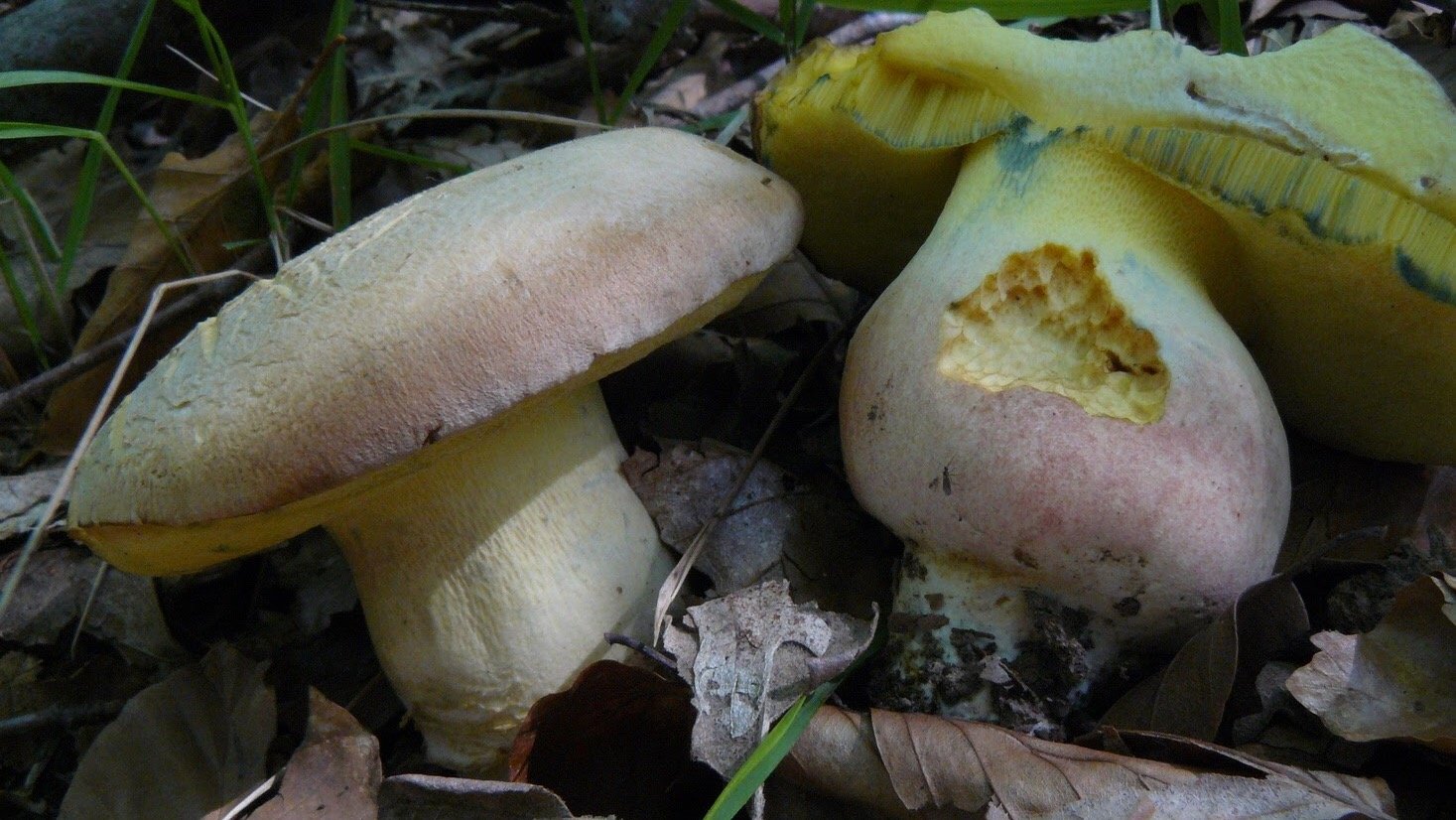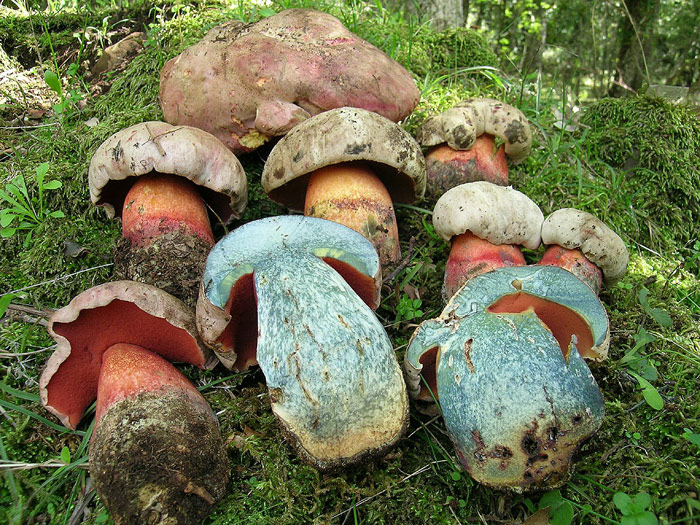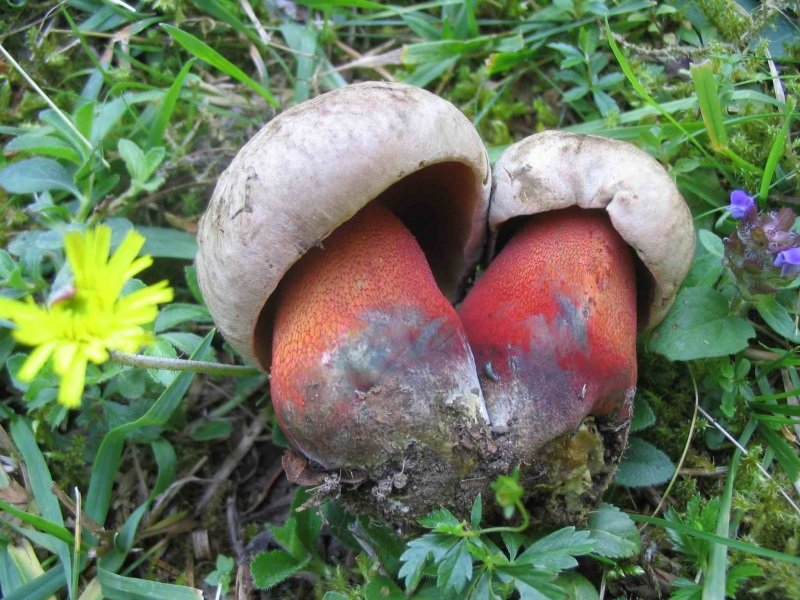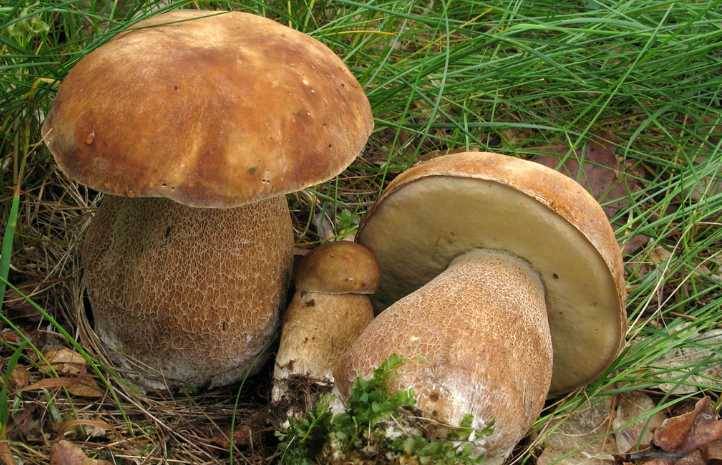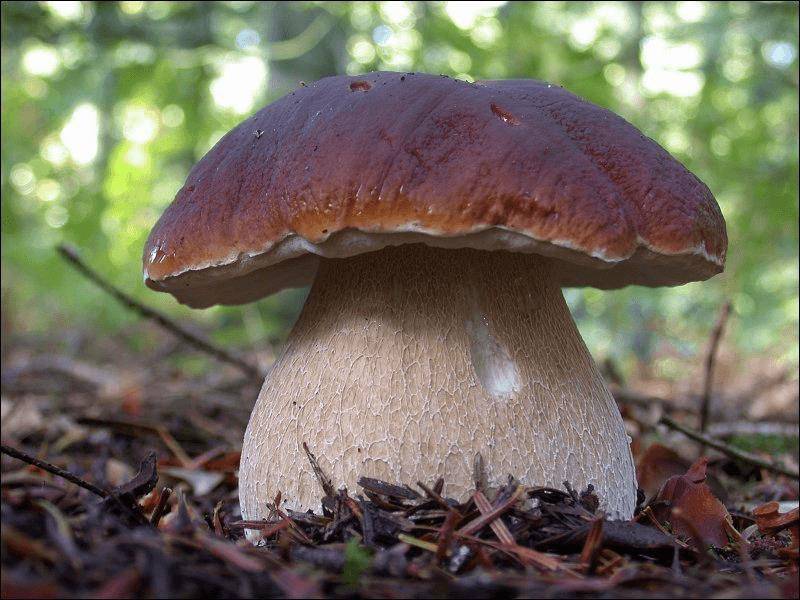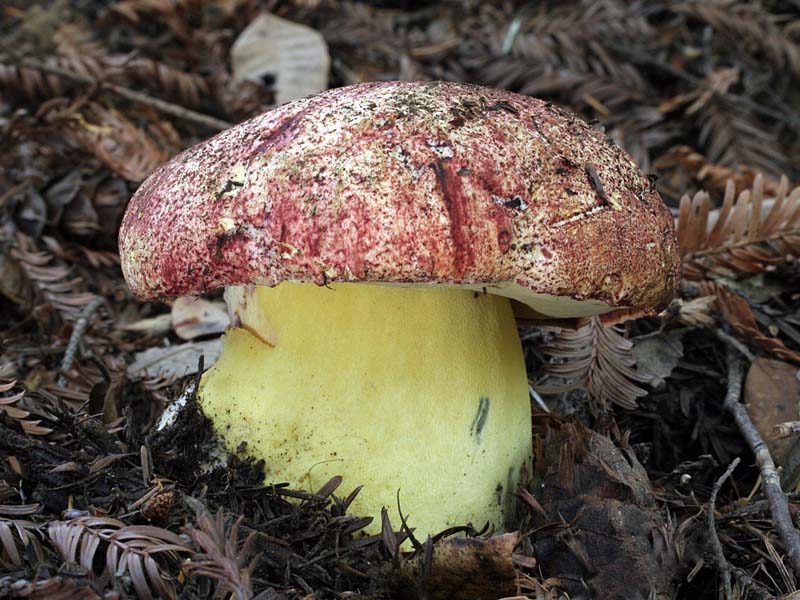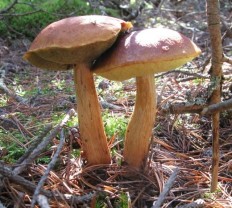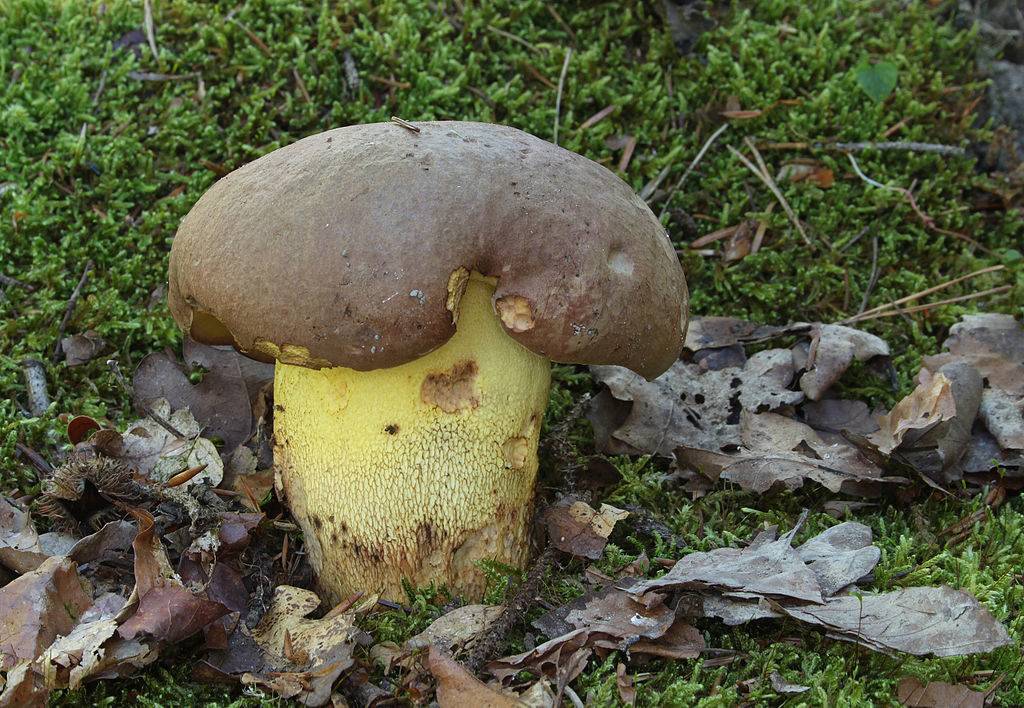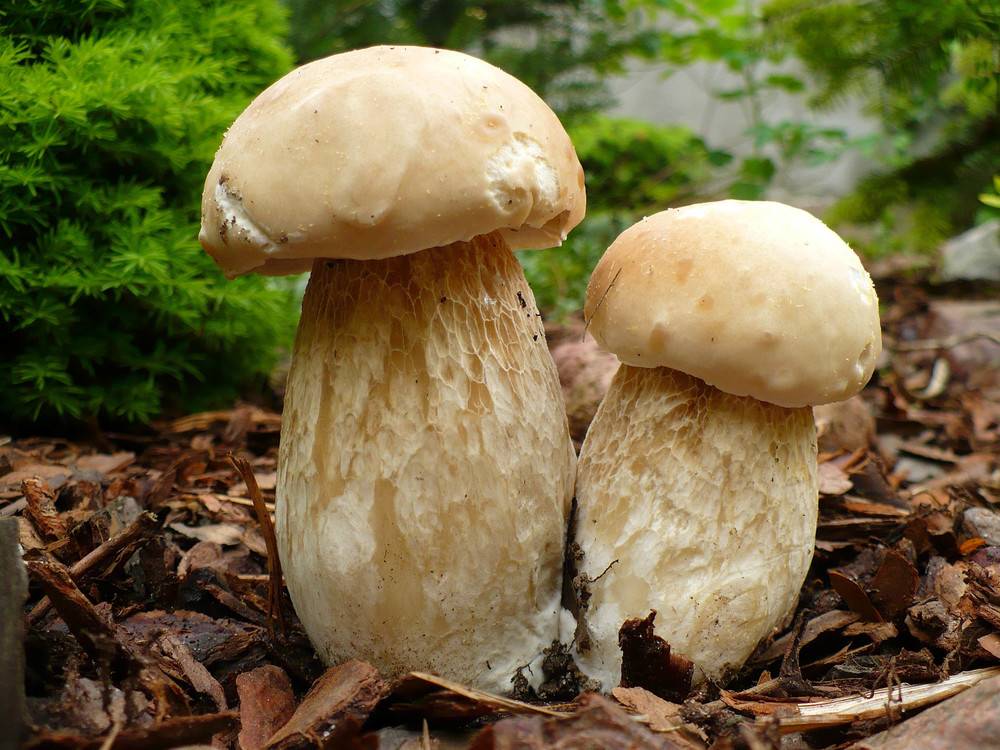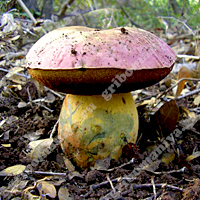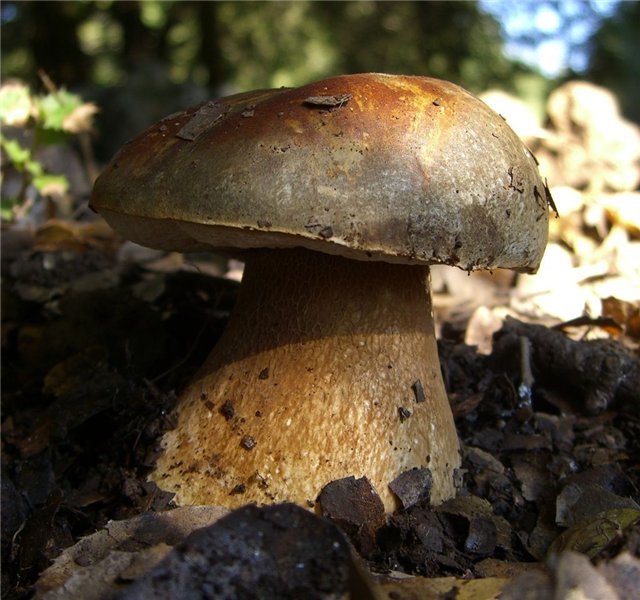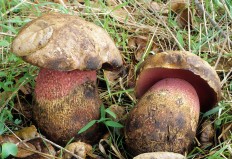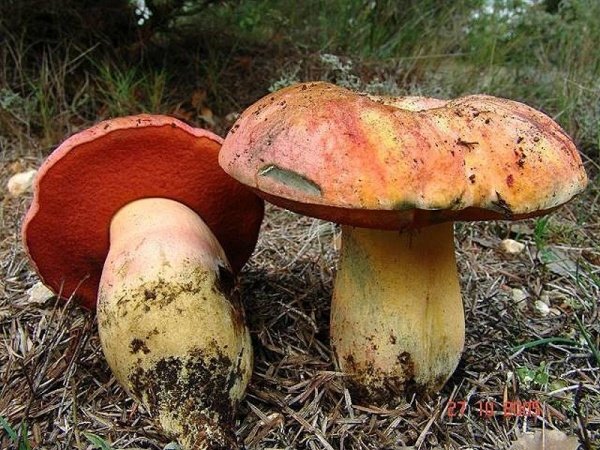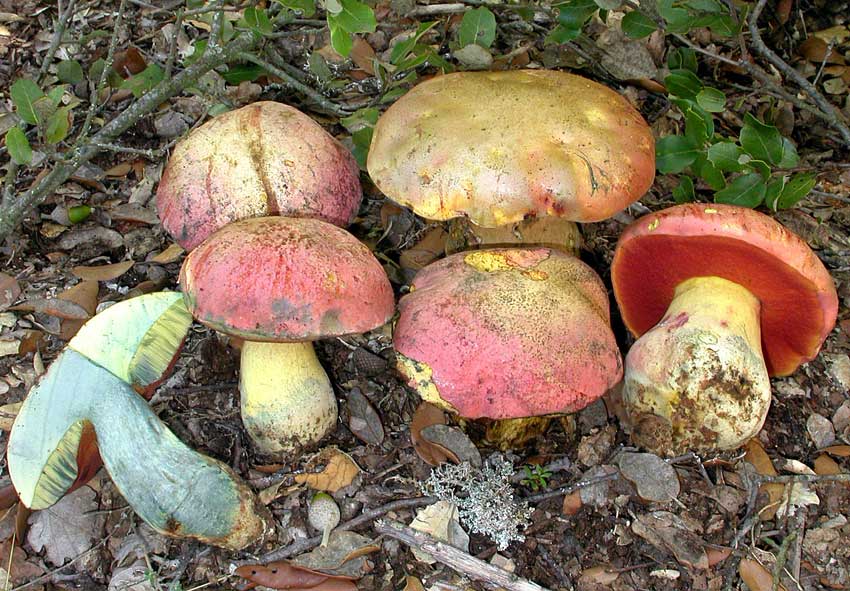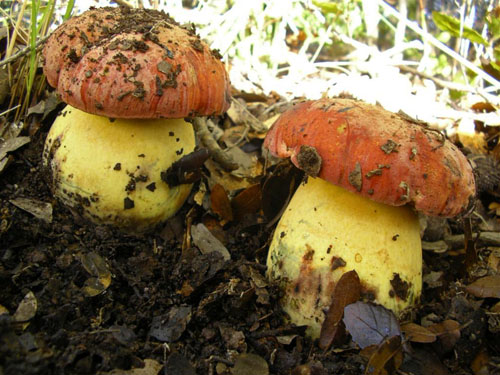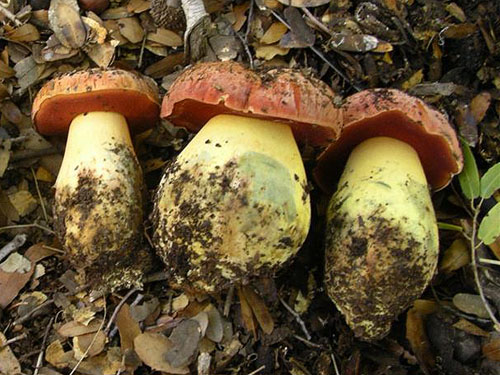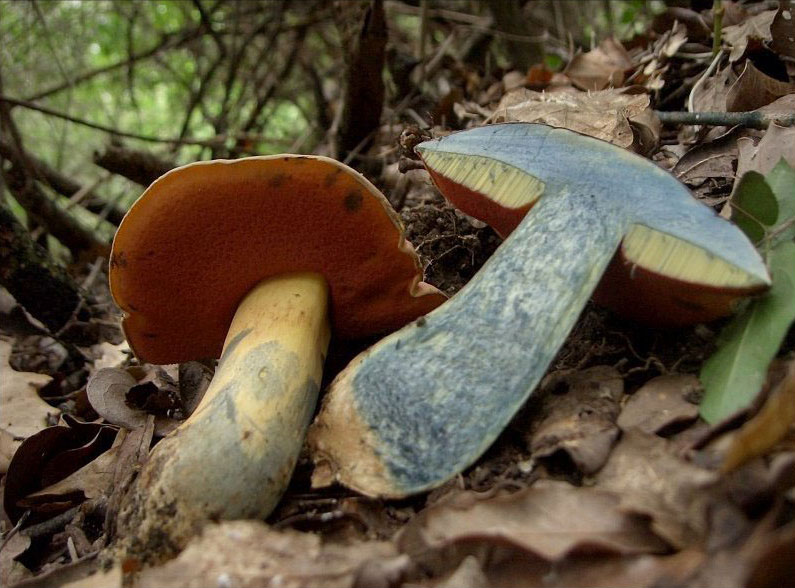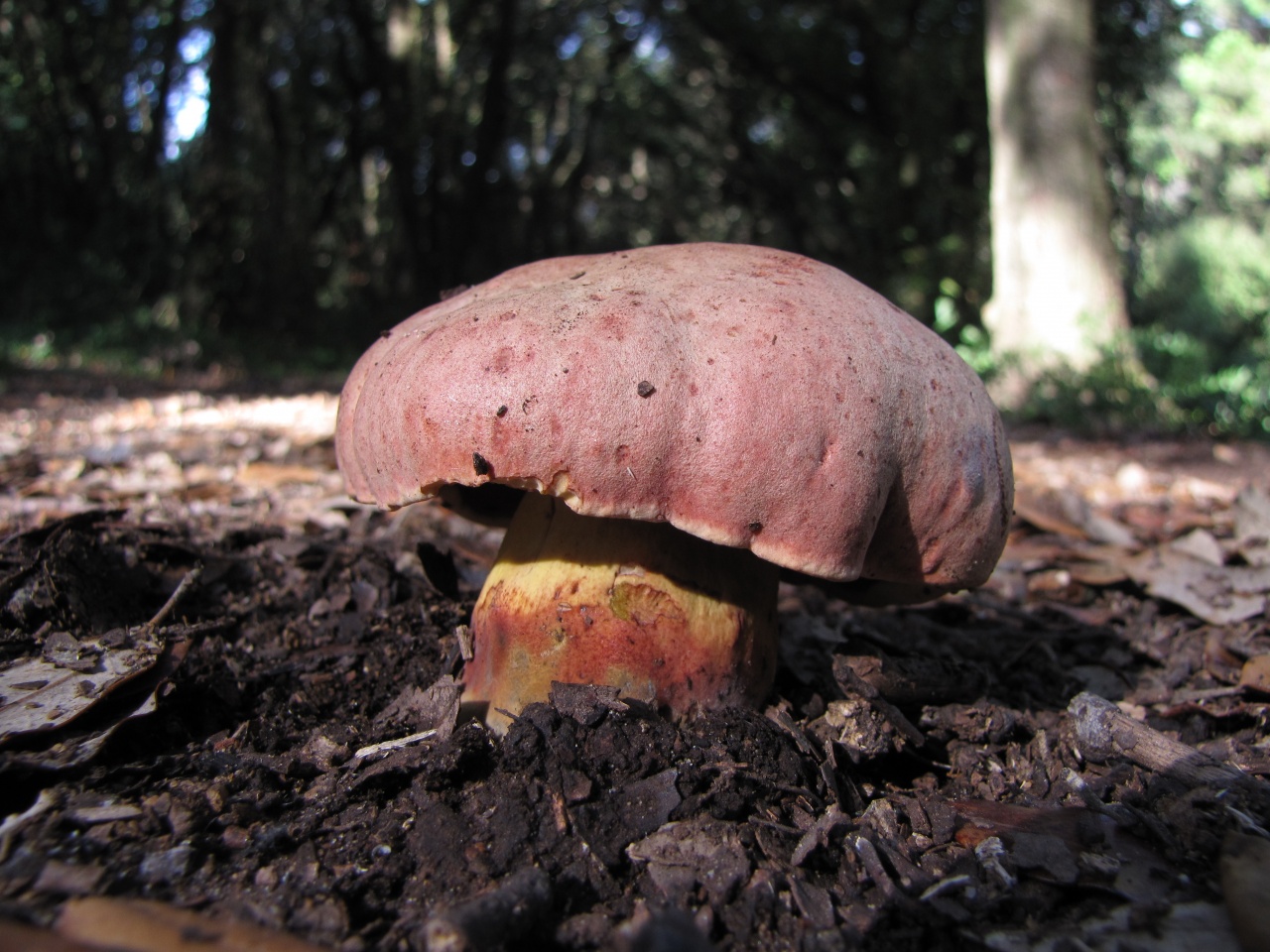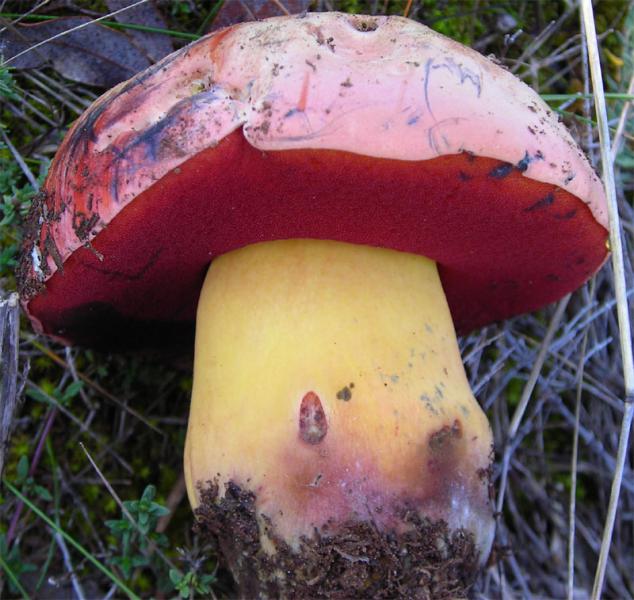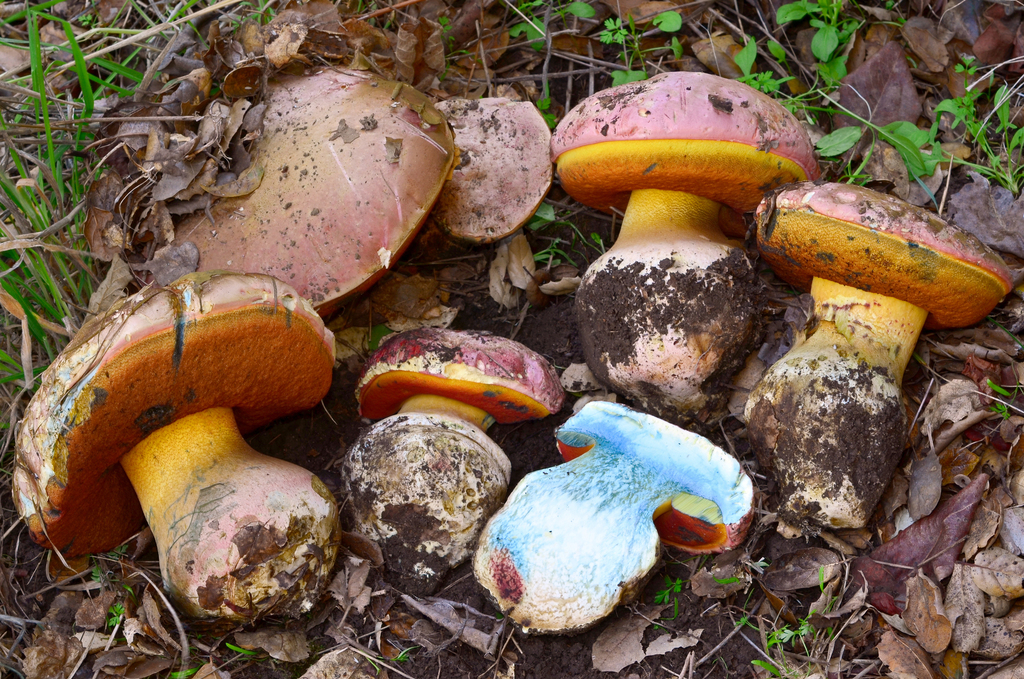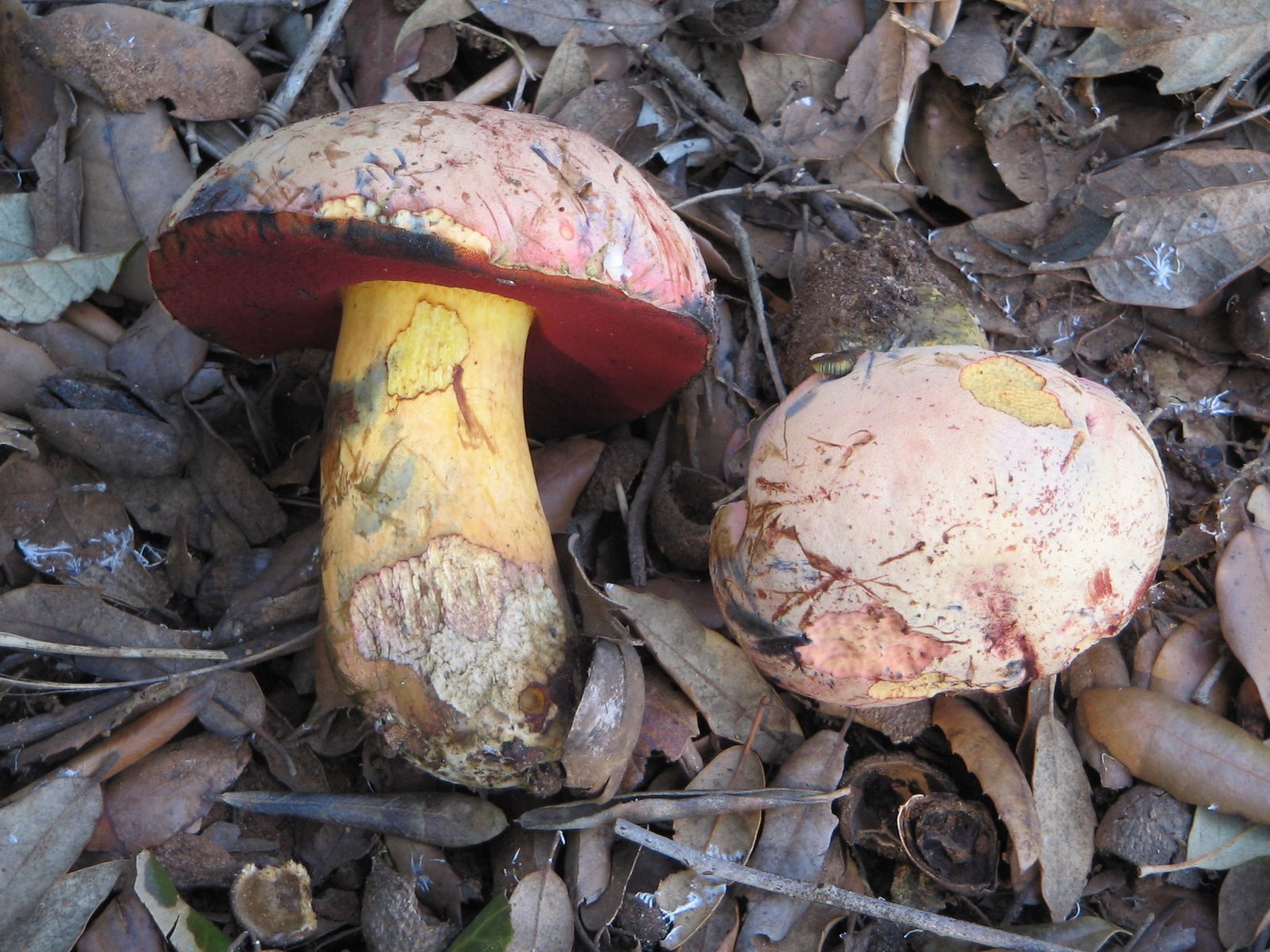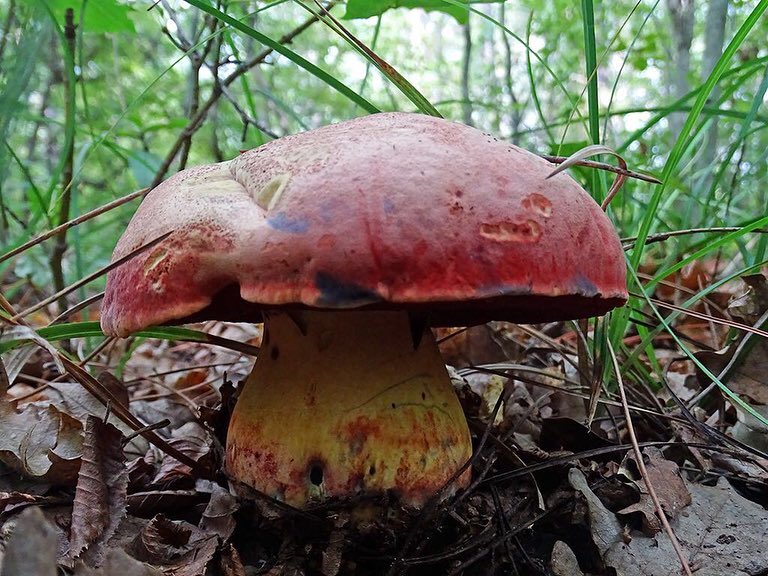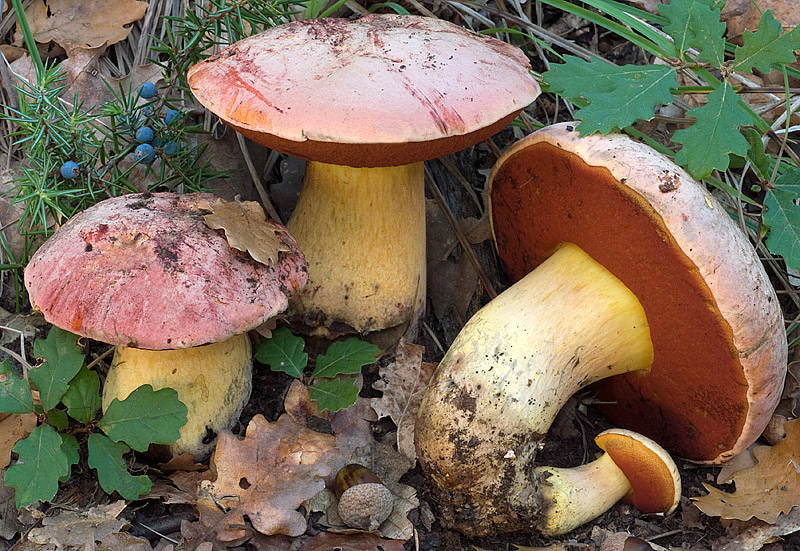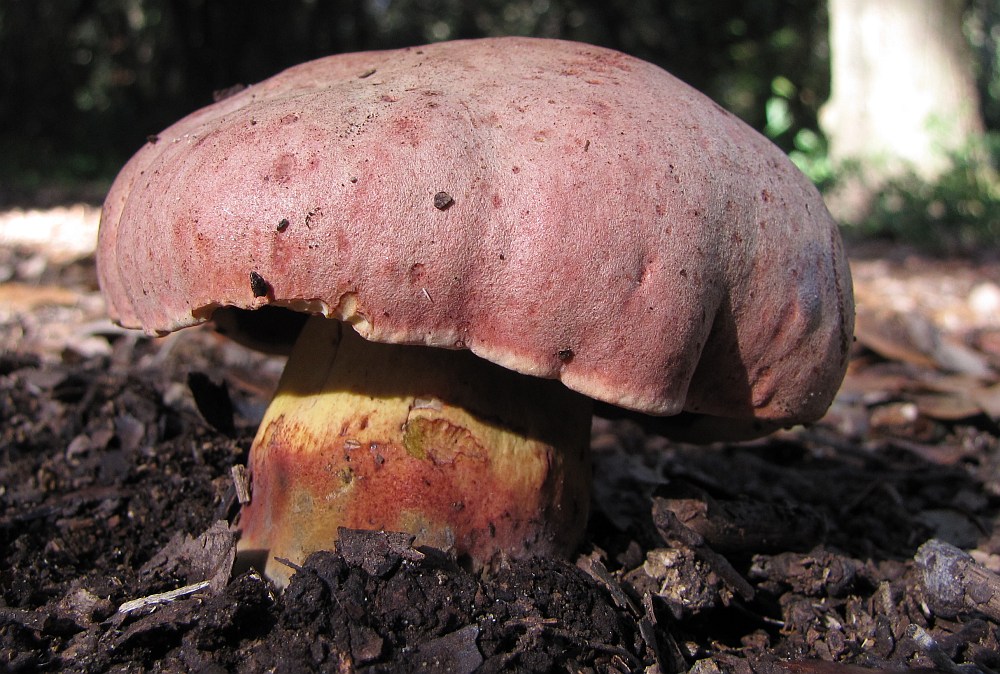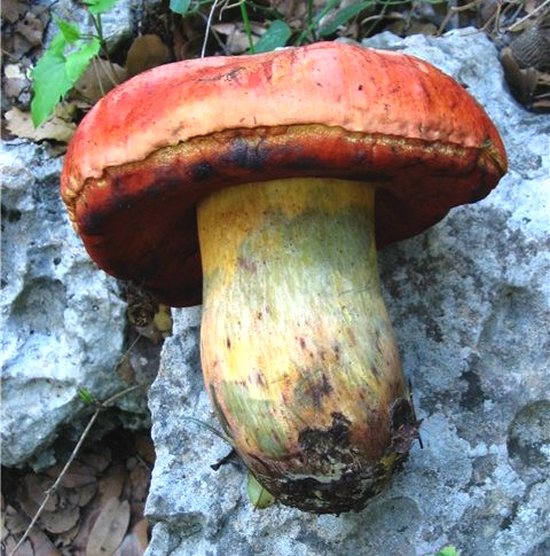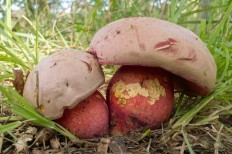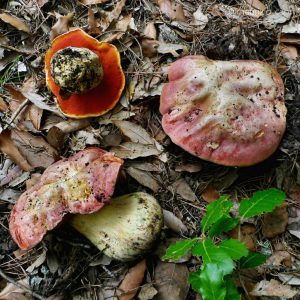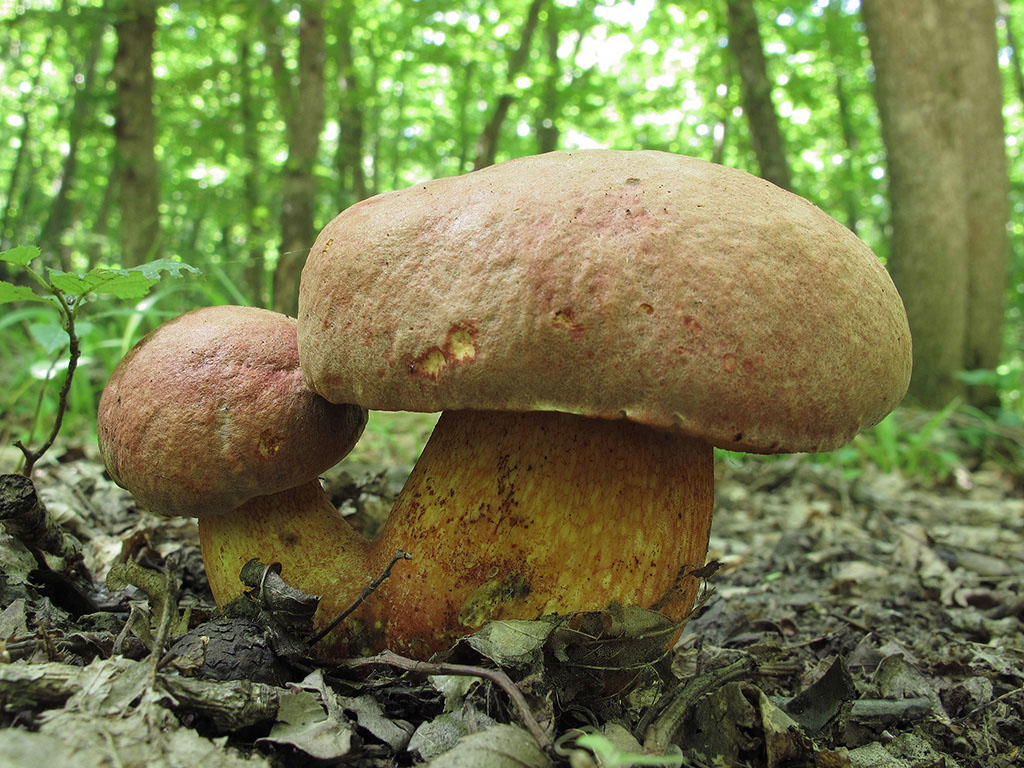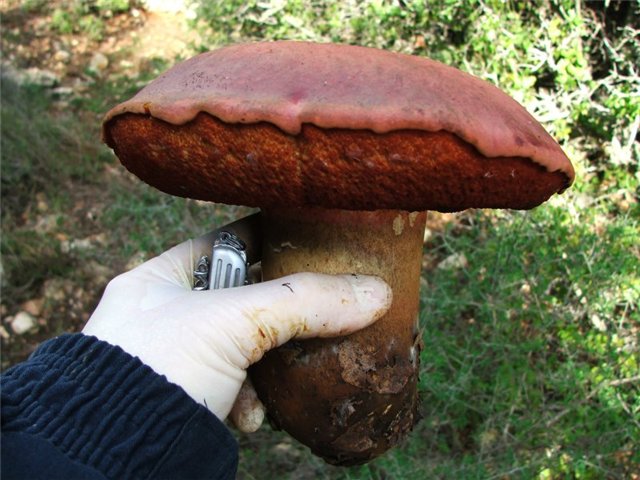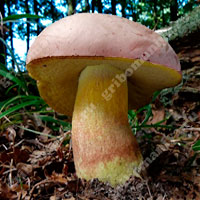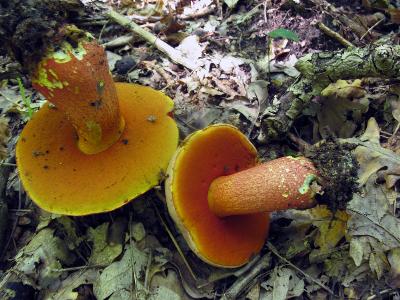Boletus wolf: where it grows, what it looks like, photo
| Name: | Boletus wolf |
| Latin name: | Rubroboletus lupinus |
| Type of: | Conditionally edible |
| Synonyms: | Satanic False Mushroom, Boletus lupinus |
| Systematics: |
|
Boletus wolf is an interesting find of lovers of quiet hunting. Despite its resemblance to the satanic mushroom, it is an edible species. In order not to confuse the wolf boletus with other representatives of the mushroom kingdom, it is necessary to study its appearance, habitats and other useful information in as much detail as possible.
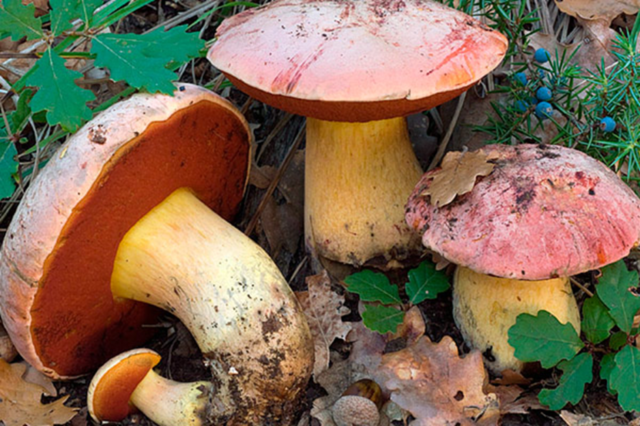
What do wolf boletus look like
Knowing what a wolf boletus looks like, you can safely cut the mushroom and put it in a basket.
- Hat. It has a fairly large size, reaches a diameter of about 15 cm, sometimes 20 cm. At the same time, in young fruiting bodies, the cap has a semicircular shape, but over time it becomes semi-open or convex, and a smooth narrowing appears along the edges. In juvenile specimens, the top may have a pale gray or coffee color. In the grown boletus, the cap becomes similar to a suede fabric, but over time the dryness disappears, and the surface becomes almost glossy and smooth. If damaged, the top of the fruiting body changes the yellow color of the pulp to blue.
- The leg can grow up to 80 mm and its diameter is 20-60 mm. It has a cylindrical shape, where the expansion falls on the middle and bottom, and the narrowing on the top. The color of the boletus leg can be bright or pale yellow, while it is easy to see spots of red-brown color. If damaged, the underside of the mushroom also turns blue.
Where do wolf boletus grow
The species may not grow everywhere. He prefers a warm climate, forests planted with oaks, beeches and other broadleaf specimens. It is most often found in the Mediterranean countries and in the northern regions of Israel, where the soil is limestone.
Is it possible to eat wolf boletus
The fruit body of the species belongs to conditionally edible mushrooms and has a rather specific taste that is appreciated among gourmets. But wolf boletus is not dangerous to health, therefore, after preliminary boiling, they can be eaten.
False doubles
Among the false doubles, there are also life-threatening specimens, which you should also find out about before going on a quiet hunt:
- Boletus is a satanic or satanic mushroom. It has a more saturated color, a mesh pattern is clearly visible on the leg. It is poisonous and unfit for human consumption.
- Pink-skinned boletus. The main distinguishing feature of the mushroom is the color of the stem (a shade of red wine) and the presence of a bright red pattern that covers the entire lower part of the fruiting body. Refers to poisonous species.
Collection rules
Wolf boletus does not grow on the territory of Russia. But, like all mushrooms, you need to be able to pick it correctly, following some recommendations:
- Harvesting in areas close to industrial plants and roads is dangerous. The mushroom pulp absorbs all harmful substances, which are not completely eliminated even when soaked and boiled.
- Fruit bodies that have multiple injuries or are completely wormy should also not be put in a common basket. Such mushrooms can be poisoned.
Use
Wolf boletus can be used as food. But there are some restrictions and features of the preparation of this "exotic" species:
- Boil the mushroom for 15 minutes. Drain the broth and do not use it in the future.
- Fruit bodies do not go for salting; it is best to pickle them in order to set off the peculiar taste of this type with vinegar and seasonings.
- Fried, stewed, and baked boletus will taste better when mixed with fresh spices, garlic, or a sauce. In their pure form, not everyone likes them.
- Fruit bodies can also be used for making soups. In this case, already boiled raw materials are also used.
- Wolf boletus is not suitable for drying and freezing.

Conclusion
Boletus wolf is a rare specimen on the table of lovers of quiet hunting
Despite its specific taste, it attracts attention with its appearance and impressive size compared to other mushrooms.
Boletus wolf description, is it possible to eat, collection rules, photo
Boletus wolf: where it grows, how it looks, photo
| Name: | Boletus wolf |
| Latin name: | Rubroboletus lupinus |
| View: | Conditionally edible |
| Synonyms: | Deceiving hell mushroom, Boletus lupinus |
| Systematics: |
|
Boletus wolf is an original find of fans of quiet hunting. Regardless of its own similarity with the satanic mushroom, it is considered an edible species. In order not to confuse the wolf boletus with all the other representatives of the mushroom kingdom, it is necessary, as far as possible, to learn in more detail its appearance, place of residence and other interesting information.
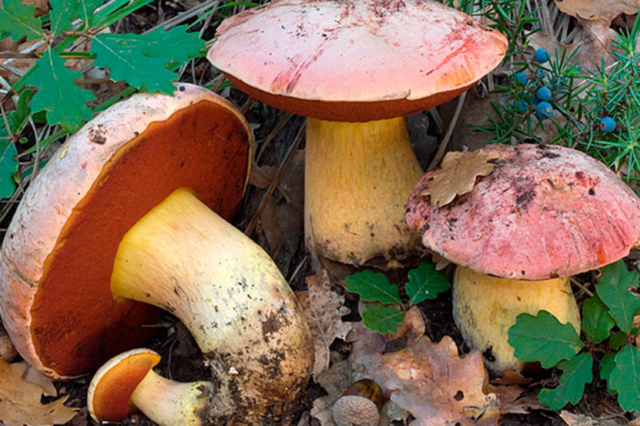
How do wolf boletus look
Knowing how a wolf boletus looks like, you can safely cut the mushroom and put it into a basket.
- Hat. It has a rather large size, it can reach a diameter of about 15 cm, sometimes 20 cm. At the same time, in young fruiting bodies, the cap has the shape of a semicircle, but over the years it becomes half-open or convex, and a smooth narrowing occurs along the edges. In juvenile specimens, the top is usually pale gray or coffee-colored. In the grown boletus, the cap becomes similar to a suede fabric, but over the years the dryness disappears, and the surface becomes actually glossy and smooth. In case of damage, the top of the fruiting body changes the yellow color of the pulp to blue.
- The leg can grow up to 80 mm and its diameter is 20-60 mm. It contains a cylindrical shape, where the expansion is in the middle and bottom, and the narrowing is partly on the top. The color of the boletus leg can be bright or pale yellow, while it is easy to see spots of red-brown color. If damaged, the part below the mushroom also turns blue.
Where do wolf boletus grow
The species may not grow everywhere. He prefers a warm climate, forests planted with oaks, beeches and other broad-leaved specimens. It is very common in the states of the Mediterranean Sea and in areas of northern Israel, where limestone soil.
Is it possible to have wolf boletus
The fruit body of the species belongs to conditionally edible mushrooms and has a rather peculiar taste, which is appreciated among lovers of delicious food. But wolf boletus is not dangerous to health, therefore, after preliminary boiling, they can be eaten.
False doubles
Among the false doubles, there are also life-threatening specimens, which you should also find out about before going on a quiet hunt:
- Bolette is a hellish or hellish mushroom. It has a more saturated color, a mesh pattern is frankly visible on the leg. considered toxic and unsuitable for human consumption.
- Pink-skinned boletus. The main characteristic feature of the mushroom is considered to be the color of the stem (Red wine tint) and the presence of a bright red pattern that will cover the entire bottom of the fruiting body. Refers to toxic species.
Collection rules
Wolf boletus does not grow in Russia. However, like all mushrooms, it is necessary to be able to pick it correctly by following certain tips:
- Harvesting in places present near industrial firms and roads is scary.The mushroom pulp will absorb all substances that are harmful, which are absolutely not removed even when soaked and boiled.
- Fruit bodies that have countless damage or are considered completely wormy should also not be put in a common basket. Such mushrooms can be poisoned.
Consumption
Wolf boletus can be used as food. But there are some limitations and specific features of the preparation of this "exotic" species:
- Boil the mushroom for 15 minutes. Drain the broth and do not use it later.
- Fruit bodies do not go for salting; it is most advisable to pickle them in order to set off the unusual taste of this type with vinegar and seasonings.
- Fried, stewed and baked boletus will taste better when mixed with fresh spices, garlic, or sauce. In their pure form, they do not appeal to everyone.
- Fruit bodies can also be used for making soups. In this case, already boiled raw materials are also used.
- Wolf boletus is not suitable for drying and freezing.
Conclusion
Boletus wolf is considered a rare specimen on the table of fans of quiet hunting
Ignoring its peculiar taste, it attracts attention with its own appearance and large size when compared with other mushrooms.

